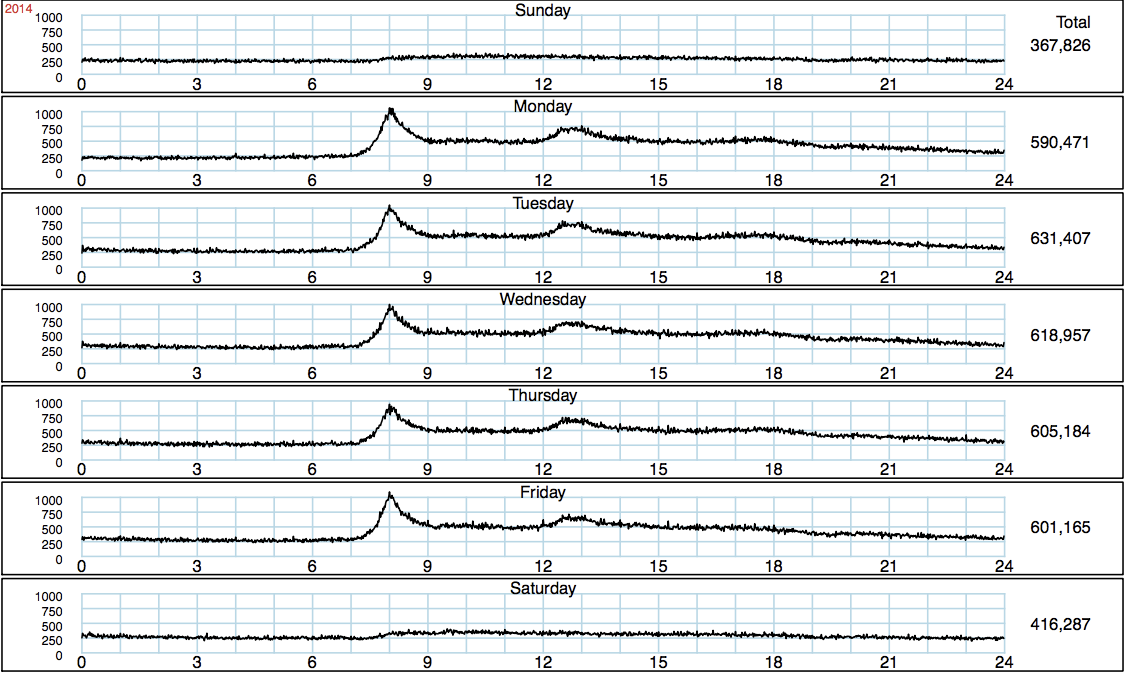The events charted in Figure 1 occurred in the U.S.A. in 2014.
Each horizontal axis is divided into 24 x 60 = 1,440 one-minute bins.
The count for each bin, shown on the vertical scale, is the total for that day of the week, aggregated over the 52 weeks of the year.
For example, 303 events took place at 13.01 (1.01 p.m.) on a Sunday, and 668 took place at 13.01 on a Monday.
The day-of-the-week-specific totals add to over 3.83 million for the year.
Another 0.16 million events are missing from the Figure, because
information as to the time of day was either not stated or not asked for.
These 3.99 million events are virtually all of the events in the USA for the year 2014 -- few if any have gone unrecorded.
Online data at this resolution have been available each year since 2011, and show a similar pattern.
The pattern has become increasingly more pronounced in the last few decades.
Figure 1

( high-resolution pdf version )
The chart was made by J Hanley from count data he extracted using the 'make your own 2-way table'
tools provided by the US statistical agency that collects this information from the State agencies.
HISTORICAL DATA
The U.S.A. only began making these national data available at this time-resolution in 2011,
so it is not possible to make direct day- and time-of-day-specific comparisons with earlier centuries or other countries.
Some historical data, aggregated over all days of the week, are available but they are limited in time and
geography, and not necessarily representative or comprehensive. For what they are worth,
the hourly data from several such series compiled in a 1962 publication are plotted in Figure 2.
Figure 2

( high-resolution pdf version ) The chart was made by JH from data
The following links give some clues as to what these series are, and to why the twenty-first-century USA series looks so different.
ADDITIONAL CLUES
First (others are be found within this link)